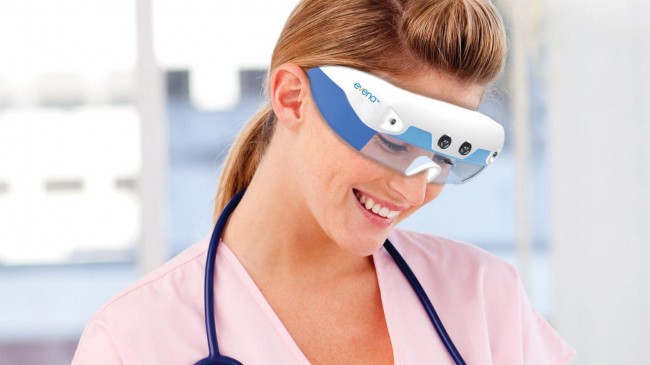Emma Julia Leacy
Contributor
Superman uses his x-ray vision to locate the trapped kitten in the burning building and the day is saved, hurray. Unfortunately for us, this isn’t possible just yet. What Superman can do though, is use his new infrared imaging glasses to quickly and easily locate veins in a patient’s arm from which to draw blood. The day may not be saved, but it could be made significantly less stressful.
The process of drawing blood from a patient can be quite an ordeal, particularly in challenging clinical settings such as A&E departments or paediatric wards. As many as 40% of IV (intravenous) starts require multiple attempts to locate and access a vein, delaying treatment and causing discomfort and frustration to patients. In 2013 California-based medical imaging firm Evena Medical unveiled their revolutionary new Eyes-On Glasses unit, a unique, hands free system that provides fast and precise intravenous access.
Evena Medical is a medical device company specialising in vascular imaging and IV access. The newly established company launched late last year, and their flagship product, the Evena Owl, is described as a “GPS for precision IV placement”. The tablet-based unit can be mounted by the bedside or on a cart, and is positioned over the patient to display the vascular anatomy and enable accurate IV access. The Eyes-On Glasses improve on this technology by making them wearable and hands free, convenient when you’re trying to stab someone with a needle.
Evena’s products are all based on the same multispectral imaging technology. Infrared light is projected onto the patient’s IV access site, allowing clinicians to effectively see “through” their skin to the vasculature beneath. The Eyes-On Glasses are worn on the clinician’s face, and contain cameras and an infrared (IR) light source. The cameras capture the IR images (not visible to the human eye) and display them on the lenses of the glasses in real time. Users see the patient’s skin as it really is through the glasses’ clear lens, but with an image of the veins as processed by the cameras overlaid on top.
This device works on the basis that deoxygenated blood absorbs light at a slightly different wavelength to oxygenated blood. Deoxygenated blood is a darker, richer red, whereas the oxygen-rich blood in our arteries is a brighter colour due to the binding of oxygen to the protein haemoglobin. This explains why some veins visible under the skin appear blue and arteries are slightly purple. Blood is generally taken from the superficial veins of the arm as they are under low pressure and easy to access.
For humans, the visible spectrum of light is approximately 390-700 nm (nanometres), however the optical window used for detecting the vein pattern is 700-900 nm. Multiple wavelengths of infrared light are layered onto the IV access site and captured by the highly sensitive cameras. The image must be processed into greyscale to allow it to be seen by the user, and this allows clinicians to visualise the superficial veins in the arm and select the ideal one for venepuncture. Image processing involves a number of processes, including negative image and edge detection, thinning, and determining thresholds. This is essential to verify and record vein patency and to reduce the risk of vein leakage and extravasation – the accidental administration of IV fluids into the tissue surrounding the blood vessel, rather than into the vessel itself.
As well as containing this impressive system of image collection and interpretation, the Eyes-On unit also contains a host of other nifty features. The custom cameras capture the images in real time, and can also transmit them to remote wireless locations via Wi-Fi, Bluetooth, or 3G. There is also internal photo and video storage built into the shades, and speakers to allow two-way audio conferencing. Helpful if your doctor is a young intern with shaky hands that may need a bit of positive reinforcement. If these features sound excessive, the company has also developed a range of low-cost devices available exclusively to developing countries.
A number of other vascular detection technologies are available, including devices using direct infrared light, lasers, and ultrasound. A vein-detecting robot has even been developed, but the Eyes-On Glasses appear to have overcome the challenges that these other systems have faced while still remaining remarkably simple to use. There is no additional heat or pain compared to standard venepuncture, and the device will work on all skin types and pigmentations. The only side effect appears to be the creation of an in-depth image of the patient’s vascular anatomy that can be shared and viewed by any member of their medical care team. Hishaam Saumtally highlighted, in the last issue of Trinity News (Wearable devices in medicine: ethical and legal implications. 21st January 2014; page 19), the legal and ethical implications associated with the current boom in remote sensors and wireless devices in healthcare and the sensitive data these produce.
It will be interesting to see what the next innovation will be from the company, and in the wider field of medicinal technologies. In the meantime don’t be alarmed if the next time you need a blood sample your clinician walks in looking like something from a sci-fi movie, you are in for nothing more than a quick and efficient good time.






